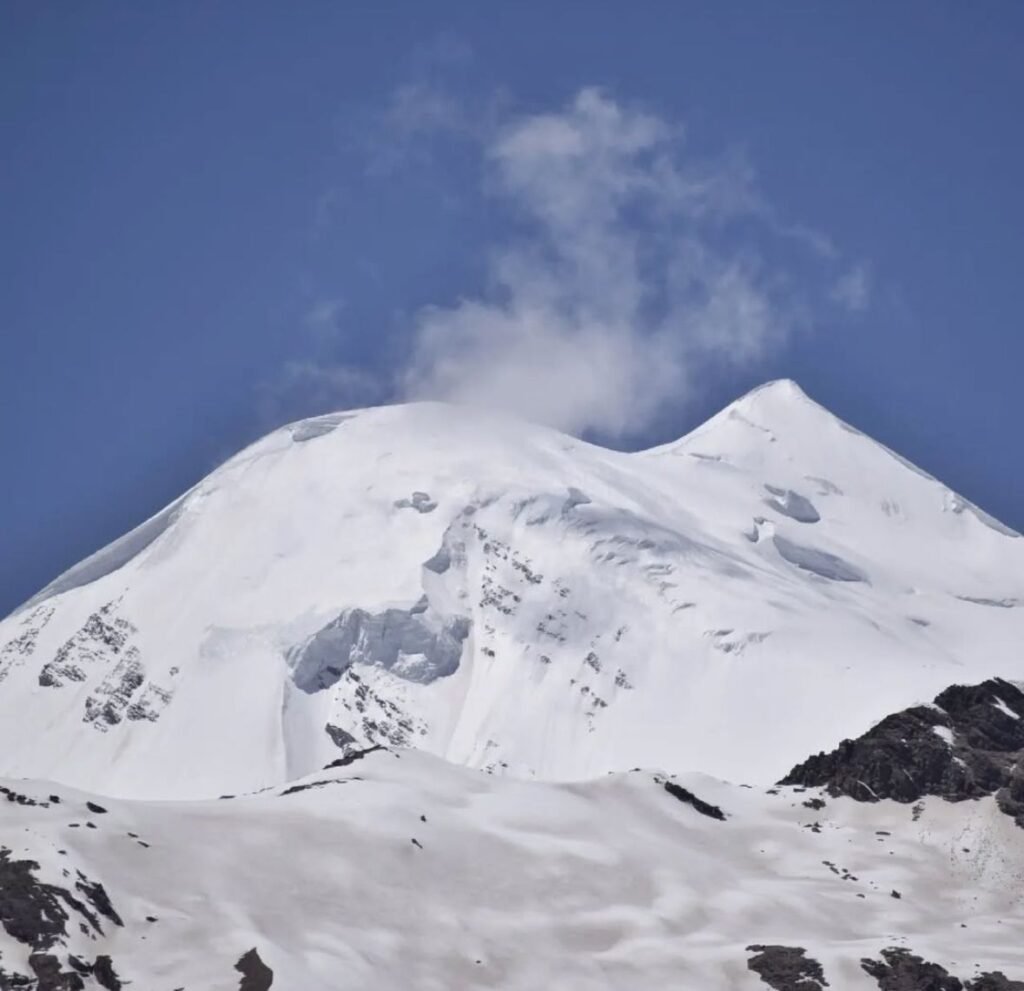The Mt. Bandarpunch Expedition is a thrilling and demanding mountaineering journey that takes climbers to the summit of Bandarpunch Peak, located in the Garhwal Himalayas of Uttarakhand, India. Standing at an elevation of 6,316 meters (20,700 feet), Bandarpunch is one of the most prominent peaks in the region, known for its challenging climbs, stunning landscapes, and spiritual significance. This expedition offers mountaineers the chance to test their technical climbing skills, while also providing an opportunity to connect with the deep spiritual and cultural heritage of the area.
Expedition Overview:
The Bandarpunch Expedition is considered a high-altitude, technical climb that is best suited for experienced mountaineers. It requires proficiency in glacier travel, ice climbing, and navigation through difficult terrain. The journey usually takes 12 to 15 days, depending on the weather conditions and acclimatization needs.
The expedition typically starts from the town of Sankri, which is the gateway to the Har Ki Dun Valley. From Sankri, climbers trek through scenic villages, alpine meadows, and dense forests before reaching the base camp at an altitude of around 4,600 meters. After setting up base camp, climbers undergo acclimatization and preparation for the summit attempt.
The final ascent involves crossing glaciers, crevasses, and ice fields, requiring climbers to use technical gear such as crampons, ice axes, and ropes. The route to the summit is steep, and the climbers must navigate through challenging ice slopes and rock outcrops to reach the top. The views from the summit are breathtaking, offering panoramic vistas of the Gangotri Range, Swargarohini, Black Peak, and other surrounding peaks.
Spiritual Significance of Mt. Bandarpunch:
1. The Sacred Connection to Lord Shiva:
In Hindu mythology, Bandarpunch holds great spiritual importance, especially due to its association with Lord Shiva, the destroyer and transformer in the Hindu trinity. The mountain is believed to be the dwelling place of Shiva’s divine energy, making it a sacred mountain in the region.
The name Bandarpunch translates to “Monkey’s Tail,” referring to the peak’s shape, which resembles the tail of a monkey. The name is tied to a popular Hindu legend associated with Hanuman, the monkey god, who is a devotee of Lord Shiva. According to legend, Hanuman once leaped across the ocean from India to Sri Lanka, and during this journey, he passed by the Bandarpunch Peak. The locals believe that the peak’s shape resembles Hanuman’s tail, which is a reminder of the monkey god’s devotion to Lord Shiva.
The mountain’s connection to these divine figures makes it a spiritual beacon for locals and pilgrims. Many people from the surrounding villages regard the mountain as a manifestation of divine energy, a place where the physical and spiritual realms intersect.
2. A Pilgrimage to the Gods:
While Bandarpunch is not a traditional pilgrimage site like the Char Dham, it is still considered a sacred journey by many of the locals. The region surrounding Bandarpunch is dotted with sacred rivers, temples, and shrines, most notably dedicated to Lord Shiva and other Hindu deities. Climbers and trekkers often take part in prayers and rituals at these temples before embarking on their journey, seeking blessings for a safe and successful expedition.
As climbers make their way through the rugged terrain toward the summit, many experience a sense of spiritual awakening, as the breathtaking landscapes, tranquil surroundings, and connection to the divine energies of the region inspire deep reflection and reverence.
3. Sacred Natural Landscape:
The entire Har Ki Dun Valley, which serves as the base for the Bandarpunch Expedition, is considered a sacred landscape. The valley, with its pristine rivers, dense forests, and high-altitude meadows, is a place where the forces of nature are believed to be especially powerful. The valley’s name itself, “Har Ki Dun,” translates to “Valley of the Gods,” further emphasizing the connection between the natural world and the divine.
Many locals believe that the Har Ki Dun Valley is the abode of the Panchtal — five ancient deities that represent the five primary elements of nature: earth, water, fire, air, and ether. These deities are said to watch over the valley and its visitors, ensuring their safety and blessings during their journey.
For climbers, the rugged terrain and the awe-inspiring beauty of the valley offer a profound sense of connection to the natural world and the divine forces that govern it. The majestic view of the Bandarpunch Peak rising above the valley further deepens this sense of spirituality.
4. Symbol of Strength and Determination:
Bandarpunch is considered a symbol of strength, determination, and perseverance. It is said that the mountain itself embodies the qualities of Lord Shiva — who is often depicted as a powerful and resolute figure — and climbers who attempt the peak must embody these qualities as well. The journey to the summit can be physically and mentally exhausting, but it is also seen as a test of one’s inner strength, courage, and spiritual resilience.
In this way, the expedition to Bandarpunch is not just about summiting a peak but also about overcoming inner obstacles, gaining spiritual clarity, and aligning oneself with the divine forces of nature. It is believed that those who reach the summit not only conquer the mountain but also experience a spiritual transformation as they come face-to-face with the raw power of nature and the divine.
5. The Journey as a Spiritual Rite:
For many climbers, the expedition to Bandarpunch is a rite of passage that offers an opportunity for personal growth and spiritual exploration. The physical challenge of the climb, combined with the beauty and sacredness of the landscape, creates an atmosphere conducive to self-reflection and meditation. Many mountaineers and trekkers report experiencing moments of deep spiritual connection, where the physical hardships of the climb fade into insignificance compared to the awe-inspiring beauty of the surroundings and the sense of divine presence they feel.
Conclusion:
The Mt. Bandarpunch Expedition is a challenging and rewarding journey that offers much more than just an adrenaline-filled climb. It is a spiritual pilgrimage that connects climbers with the divine forces of nature, mythology, and the sacred landscapes of the Garhwal Himalayas. The mountain’s association with Lord Shiva and Hanuman, its symbolic representation of strength and perseverance, and its location in the Har Ki Dun Valley make Bandarpunch a sacred mountain that holds deep spiritual significance.
Climbers who undertake the expedition are not just conquering a high-altitude peak but are also engaging in a journey of spiritual transformation, gaining strength, clarity, and a deeper connection to the divine forces that govern both nature and the universe.





